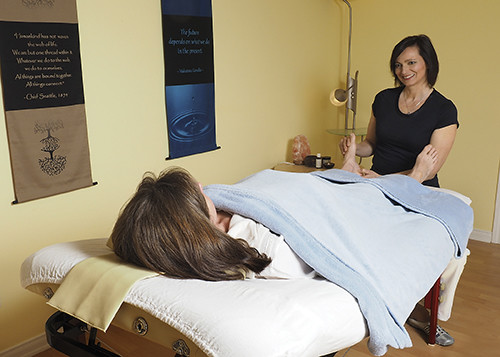Padabhyanga
Ayurveda is the traditional medicine system of India, the world’s oldest recorded healing system, with written records dating back approximately 5000 years. “Ayur” means life, “Veda” means knowledge, thus Ayurveda is the science of life, the art of living. The Ayurvedic approach to health and well-being involves balancing the energies in the polarities (head and feet). Wellness and the ability to heal depend upon the unrestricted flow of energy, called prana, or life force. The circulation of prana is facilitated via the chakras and a network (72’000) of Nadis, subtle channels or rivers of energy.
Benefits of Padabhyanga include:
- Helps to calm the mind
- Helps with insomnia, fatigue
- Helps maintain eyesight and hearing
- Improves peripheral circulation
- Aids foot health (alleviates pain, improves muscle tone and nourishes the skin)
- Helps prevent sciatica and cramps
- Helps maintain a healthy immune system
Padabhyanga invigorates and renews the entire body, but also balances and calms the mind. Feet reflect the entire body, mind and emotions, including chakras and the entire endocrine system. As in Reflexology, when working on the feet, you are working the entire body through the feet. According to ancient Indian scriptures:
“Disease does not go near one who massages his feet before sleeping, just as snakes do not approach eagles.”
In India, Padabhyanga is commonly practiced as a daily ritual, especially before going to sleep. Sesame oil is the most commonly used base oil for massage. It is rich in fat soluble vitamins, has a high mineral content and preserves well. Sesame oil is a powerful antioxidant, easily absorbed and very nourishing for the skin. Other essential oils may be added for specific effects.
Contraindications: Not to be practiced in 1st trimester of pregnancy!



